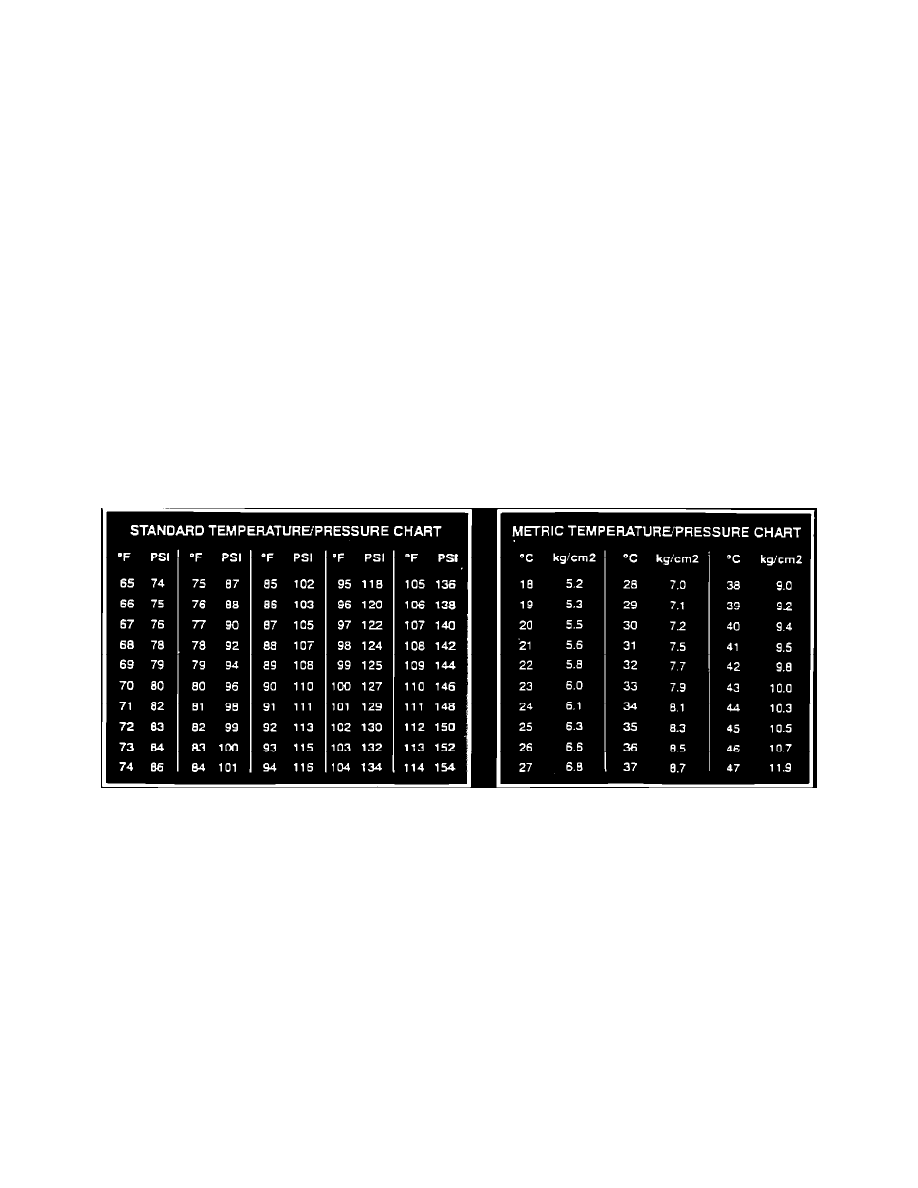Impulse L4-2254cc 2.3L SOHC (1988)

Refrigerant: Service and Repair
1. Recovery
Recovery/Recycling Stations
NOTE: Do not attempt to use refrigerant recovery/recycling stations until fully trained to do so.
Refrigerant recovery/recycling stations facilitate recovery and reuse of refrigerant after contaminants and moisture have been removed.
When using a recovery/recycling station, follow manufacturer's operating instructions and note the following:
1.
Use extreme caution and observe all safety and service precautions related to refrigerant use.
2.
Connect refrigerant recycling station hose(s) to vehicle A/C service port(s) and recovery station inlet fitting. Hoses should have shutoff devices
within 12 inches of hose ends to minimize introduction of air into recycling station and to minimize amount of refrigerant release when hose(s) are
disconnected.
3.
Turn on recycling station to start recovery process. Allow recycling station to pump refrigerant from A/C system until station pressure gauge
indicates vacuum.
4.
After vehicle A/C system has been evacuated, close station inlet valve, if equipped.
5.
Turn off station. On some stations the pump will automatically be turned off by a low pressure switch.
6.
Allow vehicle A/C system to remain closed for about two minutes. Observe vacuum level indicated on gauge. If pressure does not rise, disconnect
recycling station hose(s).
7.
If system pressure rises, repeat steps 3 through 6 until vacuum level remains stable for two minutes.
8.
Service A/C system as necessary.
9.
Evacuate and recharge A/C system.
Checking Recycled Refrigerant
Recycled Refrigerant Temperature/Pressure Chart
1.
To check for excess non-condensable gases (air), keep container at 65°F (18.3°C) or above for 12 hours, out of direct sunlight.
2.
Connect pressure gauge, calibrated in 1 psi divisions (0.1 kg/cm2), to container and read pressure.
3.
Measure air temperature within 4 inches (10 cm) of container with accurate thermometer.
4.
Compare pressure to image charts. Determine if pressure is at or below limits shown.
5.
If pressure is lower than limit shown for a given temperature, refrigerant is okay to use as is.
6.
If pressure is higher than limit shown for a given temperature, slowly vent vapor from top of container into recovery/recycling unit. Continue until
pressure falls below limit shown in charts.
7.
If container pressure still exceeds limits shown, recycle entire contents.
Storage Containers
STORAGE CONTAINERS FOR RECYCLED REFRIGERANT
1.
Use only DOT CFR Title 49 containers for recycled refrigerant. Never collect, salvage, or store recycled refrigerant in a disposable container.
2.
Before any container of recycled refrigerant is used, it must be checked for non-condensable gases (air). Refer to CHECKING RECYCLED
REFRIGERANT.
TRANSFERRING RECYCLED REFRIGERANT
